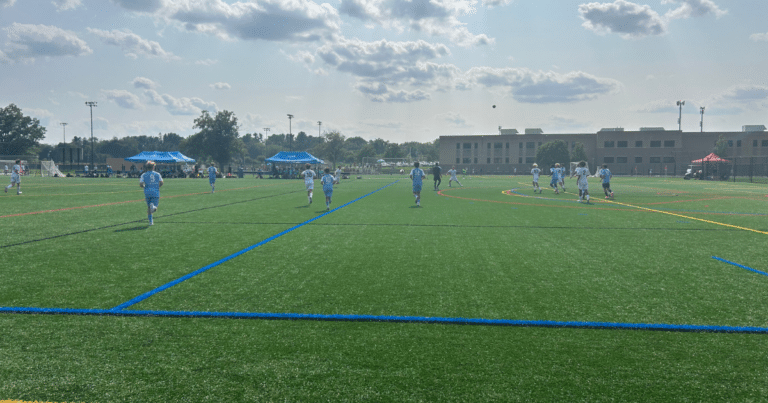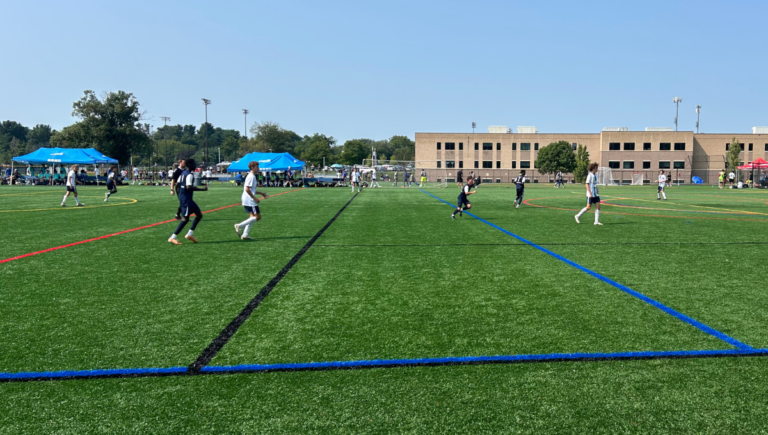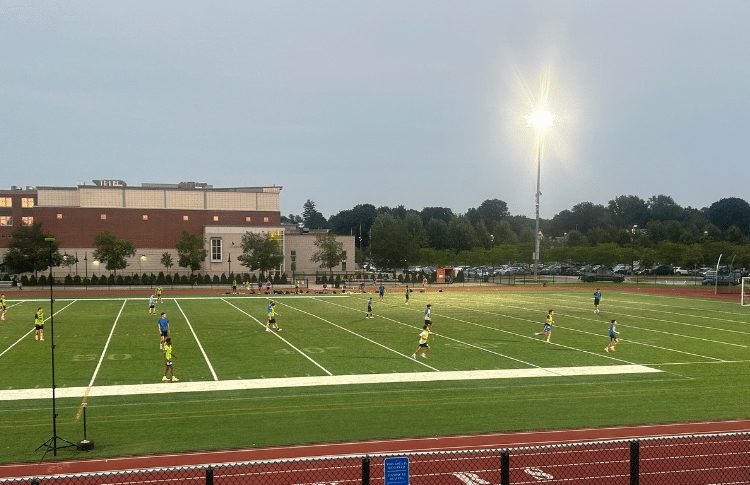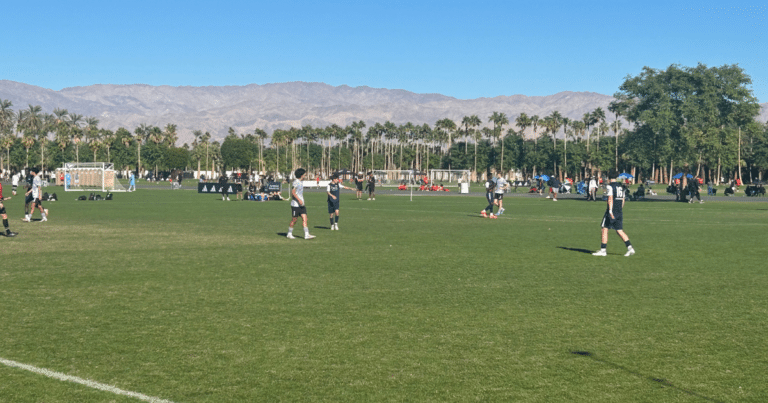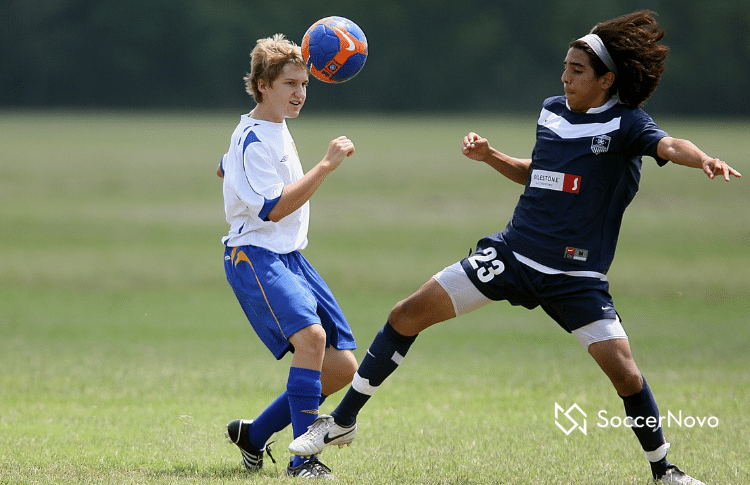Cold Weather Soccer Tips
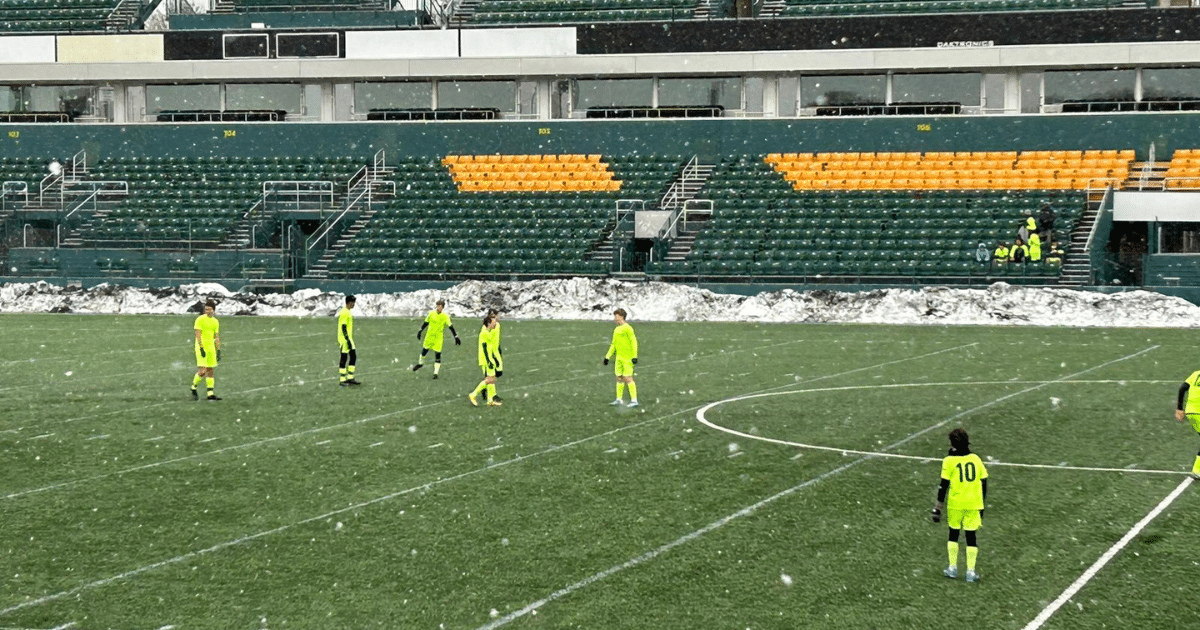
It’s November and the weather here in New Hampshire is starting to get frigid. Depending on where you are reading this from, we may have different definitions of the cold. I would take 60 degrees over 27 degrees any day! But, this is our reality in the Northeast.

There have been numerous times when my son came off the field not able to move from the cold. His body was in overdrive for 90 minutes which is never good! He finally figured it out but I don’t want this for you.
For many club teams and leagues, soccer usually runs into the month of November which can make it difficult to play in. Or, you can use it to your competitive advantage! The choice is really up to you.
Key Takeaways From This Article:
- Like most things, preparation is key and you want to have too many layers than not enough.
- Your head, hands, and feet are the most important parts of your body to keep warm.
- Prioritize a gradual warmup. Warming up in cold weather is essential for your muscles and joints.
Cold weather can make it harder to move around, control the ball, and stay focused. But with the right preparation and mindset, you can still have a successful game even in chilly temperatures. Here are some cold weather soccer tips to help you stay on top of your game.
Understanding the Impact of Cold Weather on Soccer
First off, let’s understand the impact the cold has on soccer. Here are some physical and equipment challenges to keep in mind when playing soccer in cold weather.
Physical Challenges
Cold weather can affect your body in various ways, making it harder to play soccer. Here are some physical challenges to consider:
- Decreased flexibility: Cold weather can make your muscles and joints stiffer, reducing your flexibility and increasing the risk of injury. I think we’ve all experienced this! I know I have as a 40-something-year-old.
- Reduced endurance: Cold weather can make it harder to breathe and reduce your endurance, making it harder to keep up with the game’s pace.
- Increased risk of injury: Cold weather can increase the risk of injuries such as muscle strains and sprains, especially if you don’t warm up properly.
Impact on Equipment
Cold weather can also affect your soccer equipment, making it harder to play the game. Here are some equipment challenges to keep in mind:
- Cold feet: Cold weather can make your feet numb, reducing your ability to feel the ball and affecting your performance. Wearing warm socks and a quality pair of soccer cleats can help.
- Hard soccer ball: Cold weather can make the ball harder, reducing its bounce and making it more difficult to control. You may need to adjust your playing style accordingly a bit.
- Foggy goggles: For players who wear glasses or goggles, cold weather can cause them to fog up, reducing your visibility. Anti-fog sprays or wiping them with a cloth can help.
The Most Important Parts of the Body to Keep Warm
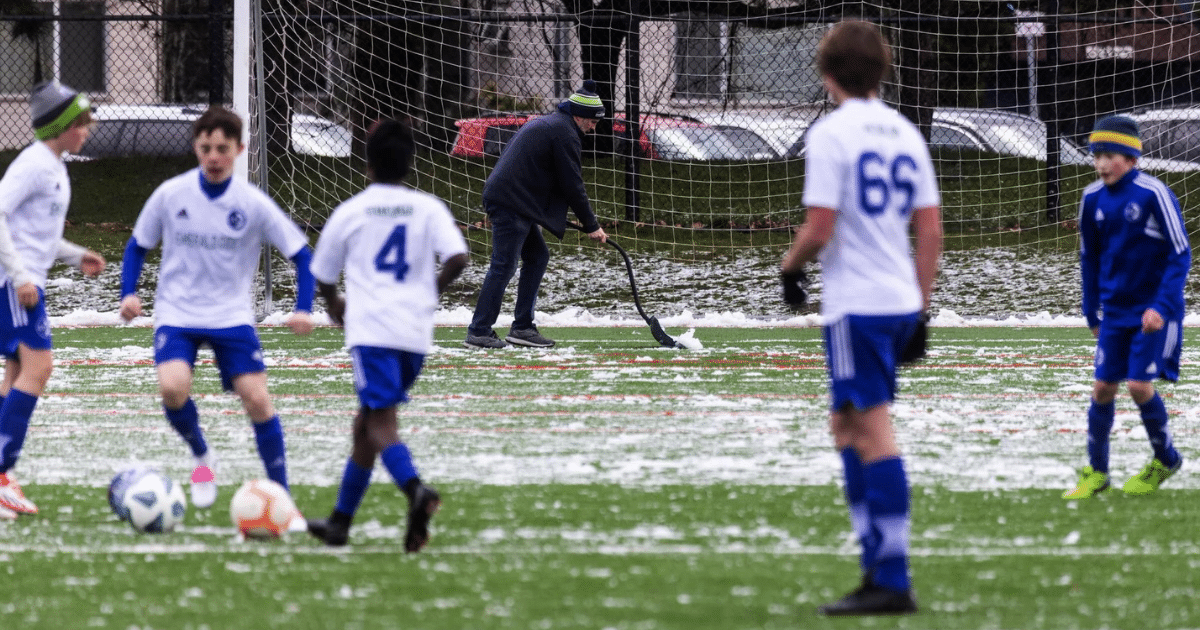
If you can keep the most important parts of your body warm you’ll be in good shape. Focus on keeping the following warm during the winter and early-spring months:
1. Head and Neck
Your head and neck are the most exposed parts of your body during cold weather. Wearing a hat or headband can help keep your head warm and prevent heat loss. Additionally, wearing a neck warmer can protect your neck from cold winds.
2. Hands and Feet
Your hands and feet are also vulnerable to cold weather. Wearing warm athletic gloves and thick socks can help keep them warm and prevent frostbite. It is also recommended to wear shoes with good insulation and traction to prevent slipping on icy or wet surfaces.
3. Torso and Legs
Keeping your torso and legs warm is crucial for maintaining optimal body temperature. Wearing layers of clothing can help trap body heat and prevent heat loss. It is recommended to wear a thermal base layer, followed by a sweat-wicking layer, and a windproof and waterproof outer layer.
Wearing the Proper Gear for the Cold
When playing soccer in cold weather, it’s essential to wear the proper gear to stay warm and comfortable. Here’s what I would wear during practices and games if the temperature drops.
- Beanie or headband
- Neck warmer
- Long-sleeve undershirt
- Warm gloves (not the bulky kind)
- Leggings/tights under the shorts
- Pants and insulated jacket for warmups
- Thick socks
Strategies for Playing Soccer in Cold Weather
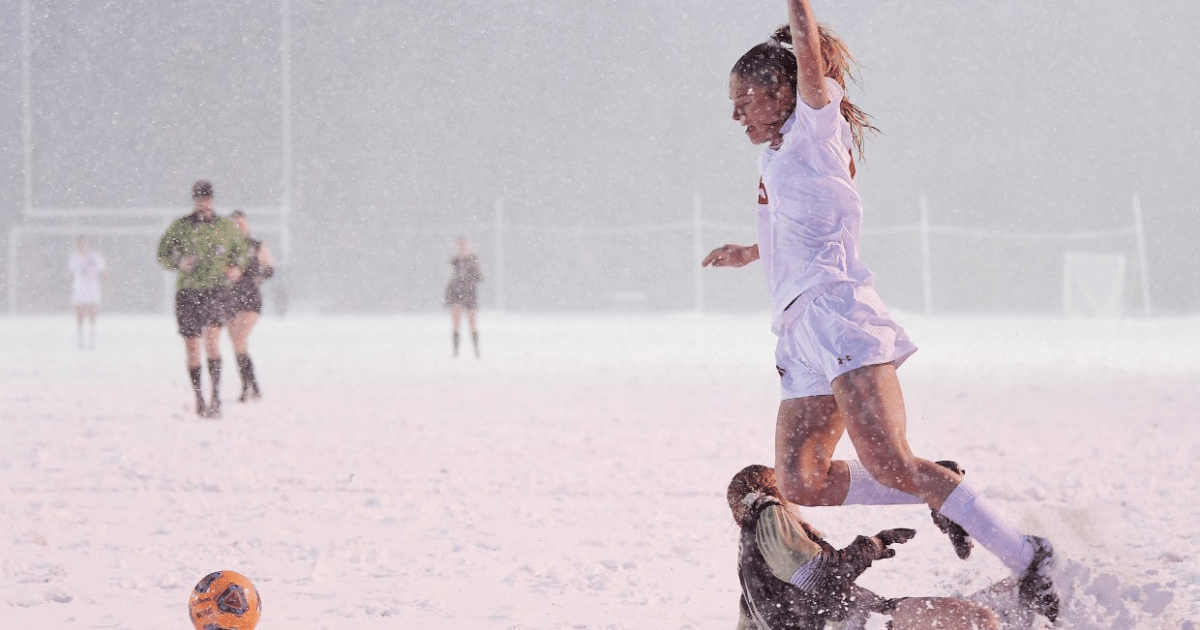
When the temperature drops, playing soccer can become more challenging. However, with the right strategies, you can still perform at your best. Here are some tips for playing soccer in cold weather:
Warm-Up Routines
Before you start playing, it’s important to properly warm up your body. In cold weather, your muscles can become stiff, which can lead to injuries. Consider the following warm-up routines to get your body ready for the game:
- Jogging: Start with a light jog to get your blood flowing and increase your heart rate.
- Dynamic Stretching: After jogging, stretch your muscles to prevent injuries. Focus on your legs, back, and arms.
- Ball drills: Incorporate ball drills into your warm-up routine to improve your ball control skills and get your mind focused on the game.
Gameplay Adjustments
In cold weather, the ball can become harder and less responsive, which can affect your gameplay. Here are some adjustments you can make to your playing style:
- Short passes: In cold weather, it’s harder to control the ball, so try to keep your passes short and accurate.
- Quick movements: Make quick, decisive movements to avoid slipping on the field. For example, if you are a winger, rather than taking long strides, consider short, choppy steps.
- Wear appropriate gear: Dress in layers to stay warm, and wear cleats with good traction to prevent slipping.
Proper Hydration
Even though you may not water because it’s too cold, it is still very important that you stay hydrated! Here are a few tips to help you stay hydrated while playing soccer in the cold:
- Drink plenty of water: Even though you may not feel as thirsty in cold weather, your body still needs water to function properly. This should be a priority for any physical activity no matter the weather.
- Avoid alcohol and caffeine: These substances can dehydrate you and make it harder for your body to stay warm.
- Bring a thermos: Fill a thermos with a warm beverage, like tea or hot chocolate, to help keep you warm and hydrated. You may not want it before or during a game, but it can really warm you up after.
Final Thoughts
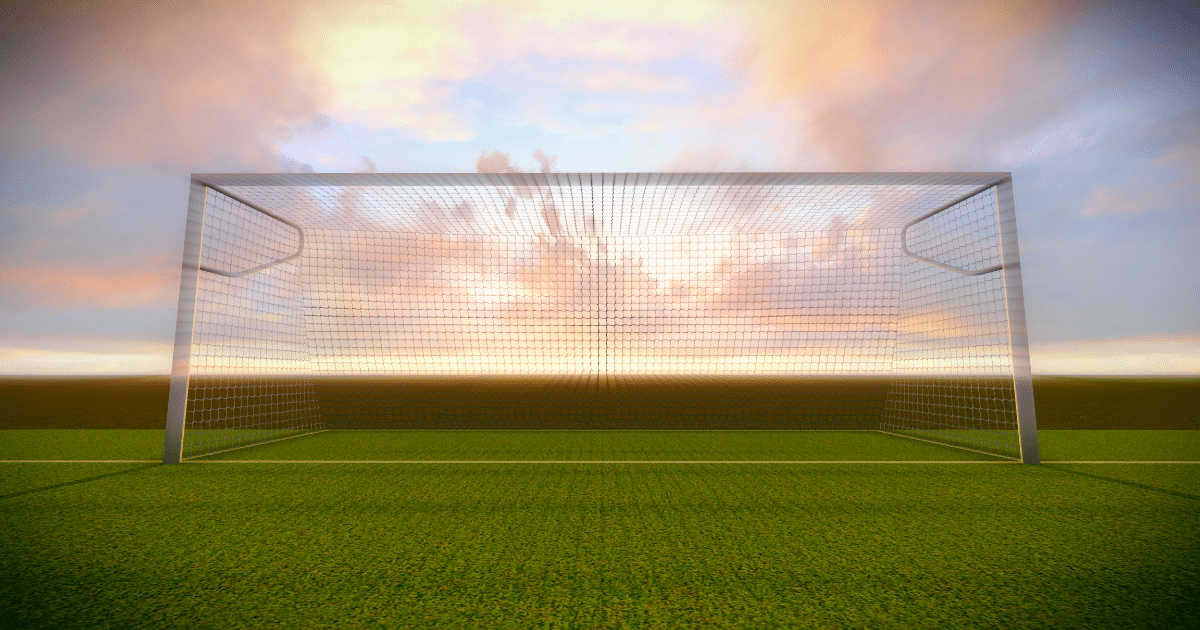
Most of this advice may seem obvious but I think it’s always a good reminder! It is much more difficult to play soccer in cold weather but with the proper preparation, you can still enjoy it!
I think the most important thing is to bring layers and ensure that your head and hands are warm. You can really trap the heat in if you have the proper gear.
What happens if it’s cold and snowing? There’s no amount of training that can prepare you for these conditions. Just try your best. It will be a very sloppy game.
I hope this advice helps you or your child stay warm during the cold months!

Written By: SoccerNovo
SoccerNovo is an independent youth soccer media brand built to help parents, players, and coaches better understand the game and the pathways available in U.S. soccer. Our mission is to make youth soccer simpler, clearer, and more accessible for everyone involved in it.
Let’s connect


